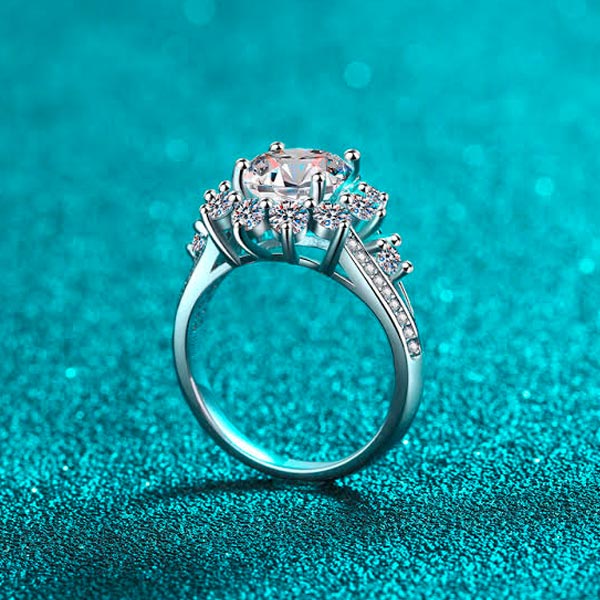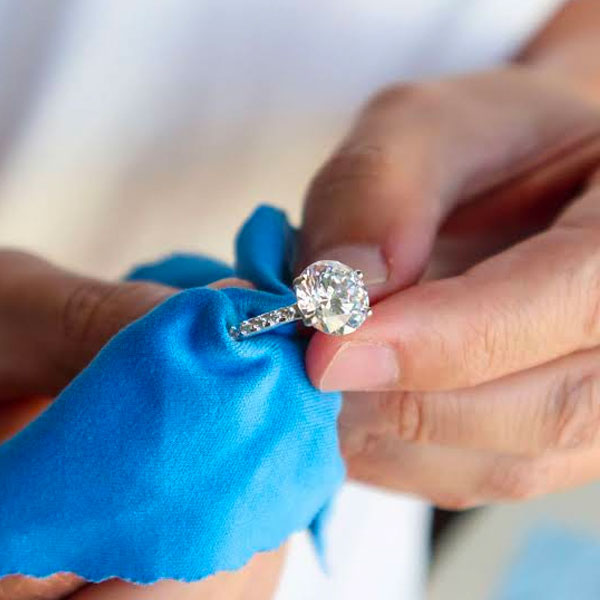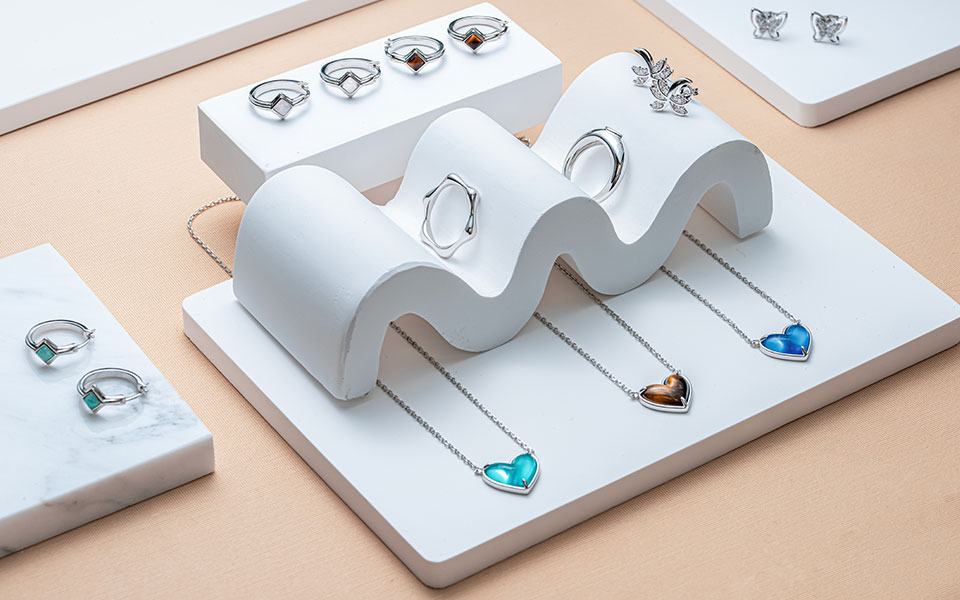Silver is one of the very few metals that has been used for centuries in jewelry making, and this is because of its cool-tone, versatility, and timelessness. Nowadays, there are various types of silver; some are pure silver while others are silver alloy i.e. silver mixed with other metals. Meanwhile, there are many forms of silver alloys, and they are primarily created to enhance the properties of pure silver in terms of durability and strength.

In this post, we will explore the various types of silver you can choose for making jewelry.
Types of Silver for Jewelry
Here is an overview of the most common types of silver used in making jewelry, alongside the composition:
| Types | Composition | Pros | Cons | Value |
|---|---|---|---|---|
| Sterling Silver | 92.5% silver and 7.5% other metals | Durable, affordable, resistant to wear and tear, and less tarnishing | Can be more expensive than other base metals, like brass | Affordable |
| Pure Silver | 99% silver and 0.1% other metals | High luster and resistance to tarnishing | Less durable and prone to damage, deformation, and scratches | Quite expensive |
| Argentium Silver | 93.5 or 96% silver, 3-5.37 copper, and 1% germanium | Great resistance to tarnish and highly durable | Not affordable | Very expensive |
| Coin Silver | 90% silver and 10% copper | Supports many jewelry designs | Susceptible to tarnishing and scratches | Less expensive |
| Silver-Filled | 90-95% base metal and 5-10% silver | Budget friendly | It’s prone to tarnishing and discoloration | Very cheap |
| Silver-Plated | Base metal and thin layer of silver | Budget friendly and suitable for custom jewelry | Susceptible to tarnishing and causes allergic reactions | Very cheap |
| Mexican Silver | Varying amounts of silver | Perfect for making intricate designs | Low quality in some cases | Affordable |
Sterling Silver
Also known as S925 silver, it is commonly referred to as the best type of silver for making modern day jewelry. It’s a silver alloy composed of 92.5% silver and 7.5% of other metals, like zinc and copper. This composition results in a more durable and affordable silver that can be formed into any desired shape. It is also capable of withstanding wear and tear. On a piece of jewelry made of sterling silver, you will find a “925” stamp somewhere on it.
Pure Silver
Also known as fine silver, it is the most valuable form of silver as it’s composed of 99% silver and 0.1% of other metals. This type of silver is very popular for its high luster and resistance to tarnishing. On jewelry made with this silver, you will find a “999” of “FS” stamp somewhere on them. However, this silver-type is not often used in making jewelry because it is an extremely malleable metal that is less durable, susceptible to damage, dent, scratch, and deformation.
Argentium Silver
This is a new brand of silver alloy that’s composed of 93.5 or 96% pure silver, 3-5.5% copper, and 1% of germanium. It’s similar to sterling silver but more tarnish-resistant because of the small amount of germanium. However, it is more expensive, which is why it’s not popularly used. To identify a piece of jewelry made of Argentium silver, a mark of “925”, “935”, or “960” will be stamped somewhere on it.
Coin Silver
This silver-type was named after its frequent use for making coins, and some other items like jewelry some decades ago. It’s composed of 90% silver and 10% copper. It has a lower composition of silver than sterling silver, which makes it susceptible to tarnishing and scratches.
Silver-Filled
This silver-type contains mainly base metals like copper or brass and an addition of a little amount of silver. It has a composition of 90-95% base metal and 5-10% silver. Over time, this little amount of silver wears off, exposing the base metal. The only advantage of the silver-filled type is that it is budget friendly as it doesn’t contain much silver, however, it causes discoloration and skin allergies.
Silver Plated
This is made of a base metal, which could be copper or nickel that is coated with a thin layer of silver. This is often used for customers who seek custom jewelry or cheap pieces. However, it is not suitable on the long-run as the silver will wear off, exposing the base metal underneath. Additionally, silver plate jewelry is more susceptible to tarnishing, and pieces made with nickel causes allergic reactions.
Mexican Silver
Also known as Bali or Thai silver, this type of silver is known for its easy craftsmanship and suitability in making intricate designs. It can be incorporated in traditional motifs and different cultural patterns. Mexican silver is composed of varying amounts of silver, depending on the type of jewelry to be made. This option is ideal for people who need unique and culturally-inspired jewelry. However, the varying silver content affects the jewelry pieces quality.
Why Should You Choose S925 (Sterling Silver)?
Among all the types of silver for making jewelry products, sterling silver is the best because it guarantees quality and longevity. It’s composed of 92.5% silver and 7.5% of other metals like copper and zinc, which makes it strong and resistant to wear and tear. Unlike some other silver-types like pure silver and silver-plate silver, it does not tarnish or dent easily, making it perfect for everyday wear.

How to Check If Your Jewelry is Made of Real Silver?
Below are the various ways to check if your jewelry is made of real silver:
- Check for Stamps: Look for marks or engravings on the jewelry that indicate the amount of silver composition. Common stamps are “925” (Sterling silver), “999” or “FS” (Pure silver), and “925”, “935”, or “960” (Argentium silver).
- Magnet Test: Real silver is not magnetic, so if your jewelry is attracted to magnet, it is most likely made of other metals, such as iron, nickel, or cobalt.
- Professional Consultation: For better appraisal, consult a reputable jeweler to perform appraisal tests, like acid testing or X-ray fluorescence. This will help to know the accurate silver composition.
Can Sterling Silver Jewelry Go in Shower or Pool?
While sterling silver jewelry is known to be durable and resistant to tarnish, it shouldn’t be used in a shower or pool. This is because exposure to water can weaken the structural integrity of the silver, leading to increased risk of damage.
Also, pools contain chlorinated water which accelerate the tarnishing of silver. The chemicals and minerals present in the water can compromise the silver integrity, resulting in discoloration and dullness.
Sterling Silver Jewelry Cleaning and Maintenance Guide
Discussed below are the various approaches to cleaning and maintaining your sterling silver jewelry.

- Soap and Water
- Make a solution of liquid dish soap and warm water, and soak your jewelry in it for 5-10 minutes.
- Use a soft toothbrush to gently scrub the jewelry.
- Rinse thoroughly in warm water and clean it with neat, soft cloth to dry.
If this approach doesn’t work in removing the stains and tarnish, try the following:
- Baking Soda and Water
- Make a paste with the mixture of baking soda and water.
- With a soft, clean cloth, rub the paste on your jewelry.
- Leave it to dry completely.
- Rinse off the paste with warm water, and dry your jewelry with a soft, neat cloth.
- Vinegar and Baking Soda
- To clean serious tarnish or stain, soak your sterling silver jewelry in a solution of ½ cup of white vinegar and 2 tablespoons of baking soda.
- Leave your jewelry in the solution for about 2-3 hours.
- Rinse with warm water, and dry with a soft, neat cloth.
- Toothpaste
- Apply a small amount of toothpaste on a soft, neat cloth
- Gently rub the tarnished area with the cloth
- Rinse with warm water, and dry with a soft, clean cloth.
Key Takeaway
There are various types of silver that can be used in making jewelry, but sterling silver is popularly preferred because it is more resistant to tarnishing and lasts longer. Also, sterling silver jewelry pieces are very easy to clean and maintain, guaranteeing ease of use and maximal luster and shine.
